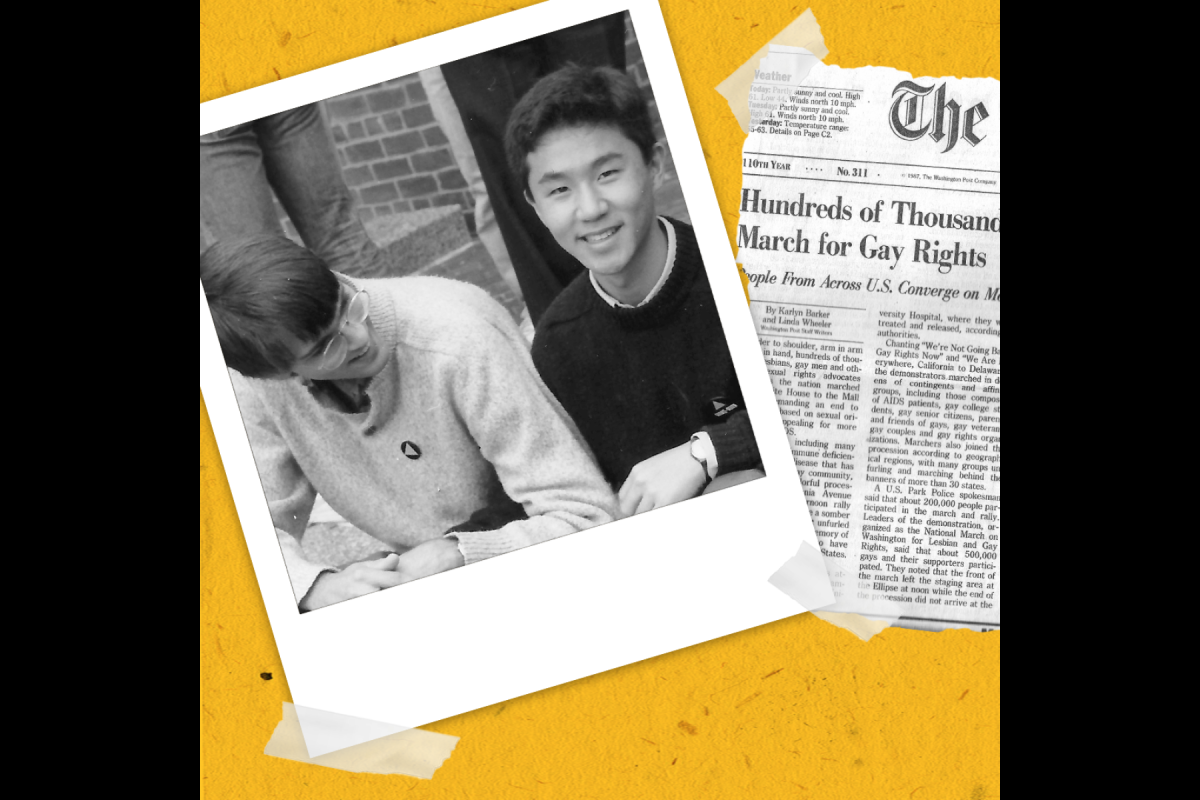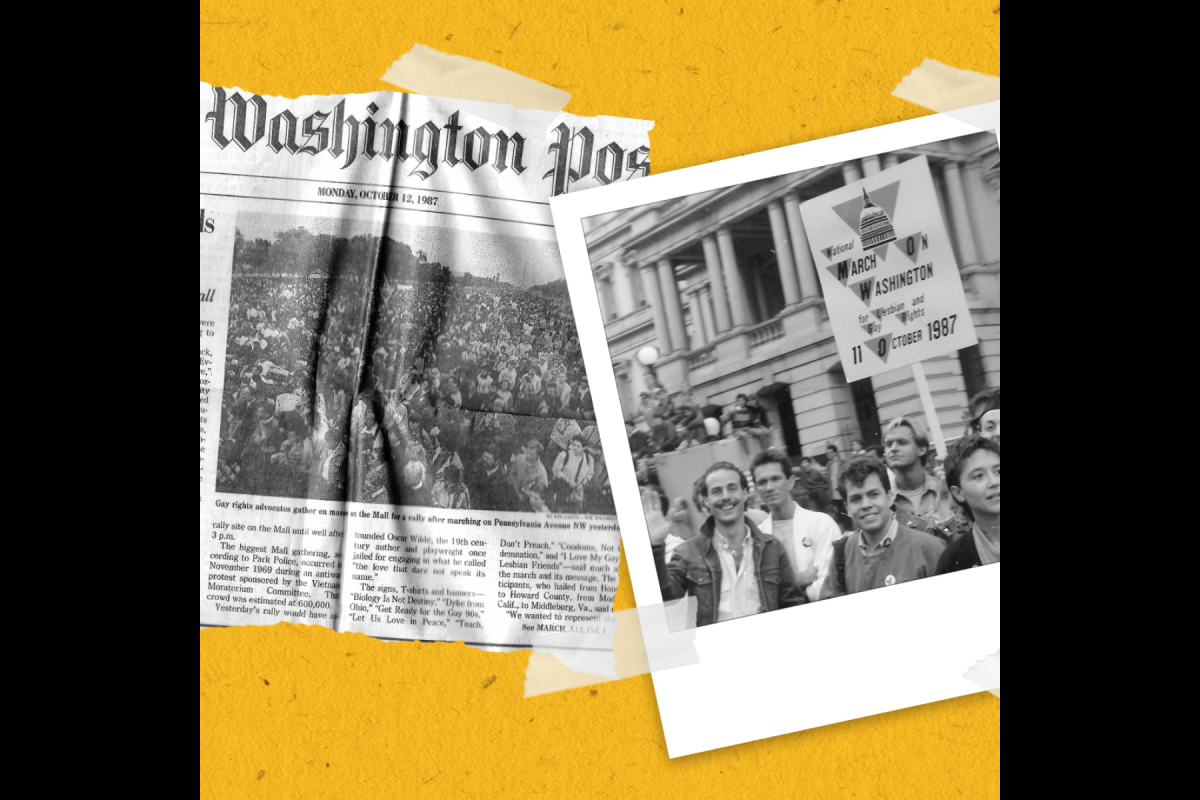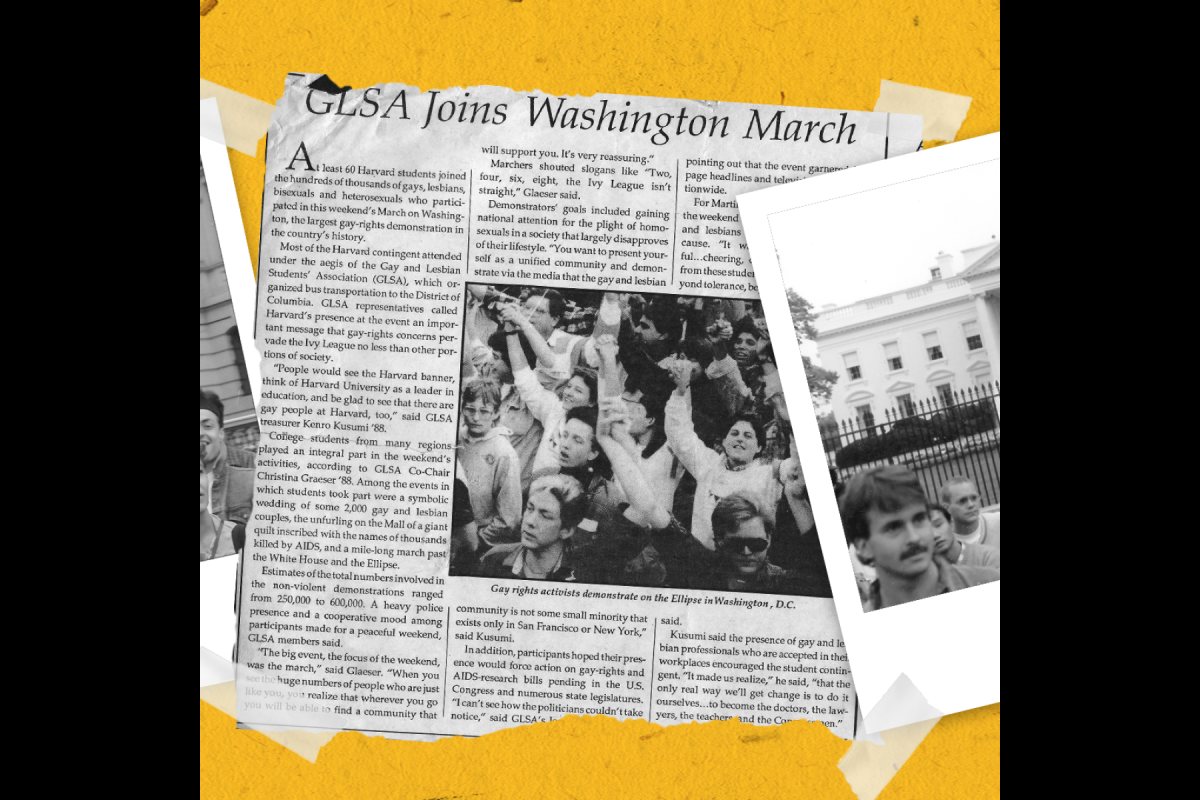Lessons from HIV/AIDS: ASU dean reflects on advancing research of public value

Photo from the Oct. 11, 1987, Second National March on Washington for Lesbian and Gay Rights. Photo courtesy of Kenro Kusumi
The first known cases of acquired immunodeficiency syndrome (AIDS) in the United States were documented in a June 5, 1981, Morbidity and Mortality Weekly Report published by the U.S. Centers for Disease Control titled "Pneumocystis Pneumonia – Los Angeles."
It detailed the mysterious and rapid health decline of five young gay men who previously showed no signs of illness.
AIDS is a persistent disease caused by the human immunodeficiency virus. HIV attacks the body’s immune system, specifically white blood cells known as CD4 cells that the body utilizes to fight infections. If left untreated over time, HIV can lead to AIDS.
At its peak in the mid-1990s, HIV/AIDS cases rose to roughly 3.2 million cases globally. In the U.S., an estimated 60,000 Americans with AIDS died from complications due to the disease in 1994. Members of the LGBTQ+ community, particularly gay and bisexual men, were hit hardest by HIV/AIDS.
In 1987, Kenro Kusumi was a biochemical sciences student at Harvard College and treasurer of the school’s Gay and Lesbian Students’ Association. Kusumi was one of an estimated half a million attendees who gathered on a fall day at the nation’s Capitol to participate in the Second National March on Washington for Lesbian and Gay Rights on Oct. 11, 1987.
Attendees of the march demanded the federal government take swift action on funding HIV/AIDS research and treatment, as well as ending discriminatory laws targeting the LGBTQ+ community.
“It made us realize … that the only real way we’ll get change is to do it ourselves … to become the doctors, the lawyers, the teachers and the congressmen,” said Kusumi in a 1987 Harvard Independent article.
Kusumi worked then to hand out AIDS education prevention materials from the Massachusetts AIDS Action Committee and volunteered at an AIDS hospice. He worked at the Harvard School of Public Health and focused his early research on HIV. His and his team’s research, published in 1992 in the Journal of Virology, identified a way to amplify and clone HIV-1 directly from infected tissues of AIDS patient volunteers, to study if different viral strains were associated with disease severity.
Now, as the incoming ASU senior vice provost and dean of The College of Liberal Arts and Sciences, Kusumi is involved in several initiatives supporting LGBTQ+ representation, including mentorship programs and serving on the board of LGBTQ Leaders in Higher Education.
Kusumi took some time during Pride Month to reflect on his early research on HIV/AIDS and the university’s role in preparing the next generation of virologists and immunologists.
Question: ASU’s charter includes that the university advances “research and discovery of public value” and assumes “fundamental responsibility for the economic, social, cultural and overall health of the communities it serves.” What initiatives of public value have you been able to support at ASU that align with the charter and have the potential to improve communities?
Answer: The ASU Charter is about inclusion and serving our communities. ASU is absolutely committed to enabling students from various backgrounds to succeed.
Dreamscape Learn is a new immersive technology that we're using in the science classes that helps students learn in ways that the traditional laboratory exercises never offered. We have faculty, staff and students creating innovative approaches to address the major health challenges of today, ranging from COVID-19 to neurodegenerative disease, cancer, and addiction and substance-use disorders.
Many people are called to action by the challenges of their times, like epidemic disease or climate change. The ASU Charter’s call for use-inspired research makes the university a supportive environment for scholars who are working to promote the health of our communities.
Q: What inspired you to focus part of your research on HIV/AIDS virology and treatment?
A: As I saw what impact HIV/AIDS was having on my community, I wanted to take responsibility and do something about it. As a scientist, I could help to address the mysteries of how HIV causes disease.
We just went through something similar more recently with COVID-19. You have a new, mysterious disease, and initially it was not clear what caused it and exactly how it was transmitted. Then you find out what's causing it, but you have to get the word out about how to prevent it. COVID was similar, but HIV/AIDS education efforts were complicated by society's views toward the LGBTQ+ community.
The scientific response with any sort of disease is, what's causing it? How can you treat it? How do you stop it? As a scientist in training, I felt a responsibility to try to have some impact.
Q: HIV has impacted members of the LGBTQ+ community especially hard. Take us back to the early marches. What was it like to be at the front lines of the HIV/AIDS crisis as an activist and member of the LGBTQ+ community?
A: The last several decades have seen enormous advances for the LGBTQ+ community, However, the situation in the 1980s at the emergence of HIV/AIDS was very different. In fact, in most states in the country, you could be arrested for being in a gay physical relationship. That was the law of the land and upheld by the Supreme Court in 1986, which was one of the events that led to the Second National March on Washington. Because of this discrimination in the early ’80s, a lot of people were, for justifiable reasons, not able to live as their authentic selves because of fear of being disowned by their families, being fired from their jobs or being kicked out of their housing.
This made it very challenging to distribute educational material to those who might be most at risk of being exposed to HIV/AIDS. HIV is transmitted through bodily fluids, and there were measures that could greatly decrease exposure. At the time, there was a lot of fear and disinformation that made getting accurate information out to the public very challenging. In addition, there was frustration that governments were slow to roll out public measures for HIV/AIDS prevention, since gay men were the largest affected population.
In June, we celebrate Pride Month to commemorate the Stonewall riot that was an early instance of LGBTQ+ people standing up for themselves to be heard. The HIV/AIDS crisis also forced the LGBTQ+ community to come together for support, but also to make our voices heard to get governmental action.
Q: What still needs to be accomplished through activism and research?
A: I think for the research side, it's pretty clear that HIV/AIDS certainly burst the bubble of complacency of thinking we had infectious diseases under control. I think now, multiple outbreaks, more recently culminating with COVID-19, and our concerns about emerging diseases like avian flu and dengue fever, we need to be on guard for the next epidemic.
The College of Liberal Arts and Sciences is strongly positioned to address those challenges, with over 50 research centers and institutes, as well as dozens of labs, like our cutting-edge mosquito research facility, which focuses on mosquito control and disease prevention.
In regard to activism, it is my hope that The College will continue to push the boundaries of education so that we can create supportive and accessible environments for all learners. How can we do even better to live up to ASU’s charter and support inclusion and access?
For example, about half of our students are online, and that percentage will continue to grow. How can we further innovate those programs to address challenges such as retention and advising for online and often nontraditional students? The School of Molecular Sciences just launched more flexible hands-on lab options for online students, and we have the OURS program, which offers fully online and hybrid research experiences to online students throughout The College. So we’ve made a lot of progress, but we can do more.
Q: What advice would you give an aspiring scientist wanting to focus on HIV/AIDs research?
A: The world desperately needs virologists and immunologists who study infectious disease and public health scientists who can help prevent disease transmission. With the interconnectivity of our world, we really need people to not only study existing diseases, but also to prepare for the next outbreak. Viruses are constantly evolving. We desperately need researchers studying the causes of disease and public health because we never know when the next major outbreak is going to occur.
More Health and medicine

New study seeks to combat national kidney shortage, improve availability for organ transplants
Chronic kidney disease affects one in seven adults in the United States. For two in 1,000 Americans, this disease will advance to kidney failure.End-stage renal failure has two primary…

New initiative aims to make nursing degrees more accessible
Isabella Koklys is graduating in December, so she won’t be one of the students using the Edson College of Nursing and Health Innovation's mobile simulation unit that was launched Wednesday at Arizona…

Reducing waste in medical settings
Health care saves lives, but at what cost? Current health care practices might be creating a large carbon footprint, according to ASU Online student Dr. Michele Domico, who says a healthier…





